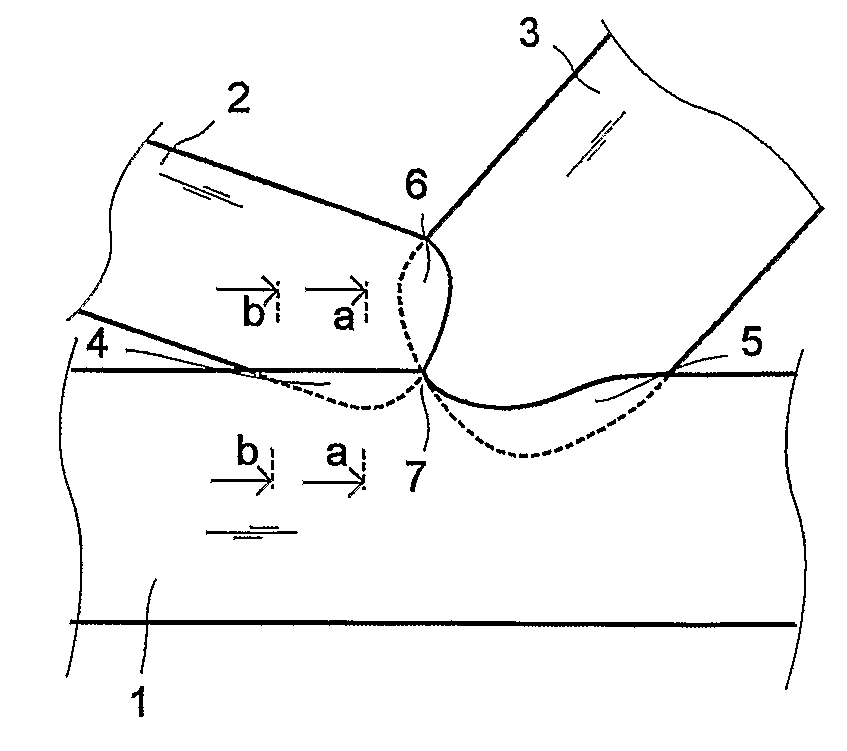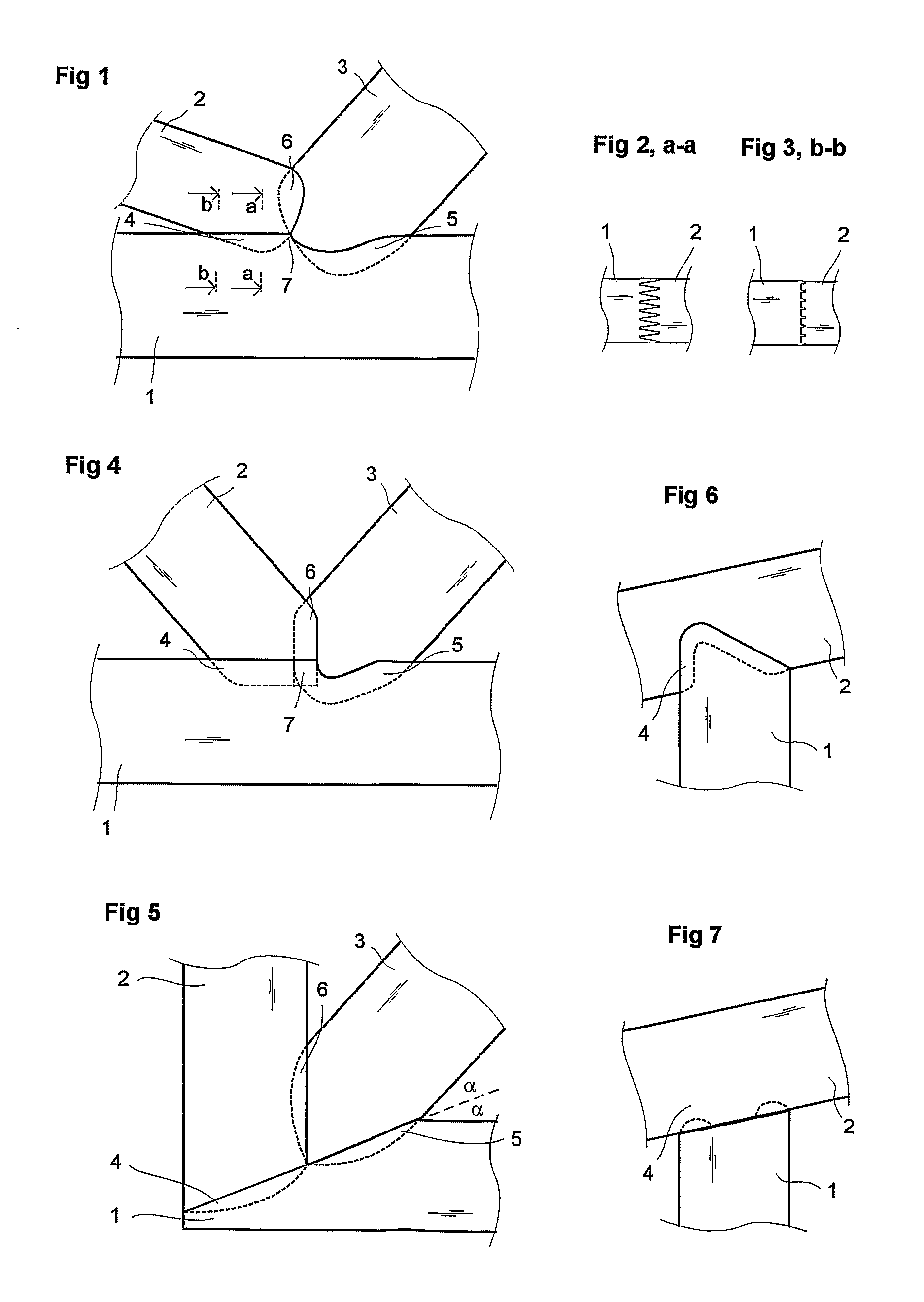Joint Between Wood Pieces
a technology of wood pieces and joints, applied in the direction of cables, cables for vehicles/pulleys, structural elements, etc., can solve problems such as inability to meet the needs of us
- Summary
- Abstract
- Description
- Claims
- Application Information
AI Technical Summary
Benefits of technology
Problems solved by technology
Method used
Image
Examples
Embodiment Construction
[0038]In FIGS. 1, 2, 3 the finger joint is a diagonal of two wooden parts 2 and 3, as a truss, on the side of the chord of other wooden part 1. FIGS. 2 and 3 show the section of joint area 4 fingers. The fingers get shorter in the ends of the joint area. In this case the fingers of part 2 get thicker while getting shorter. Finger cuttings between parts 4, 5 and 6 are presented with a uniform line, if the cutting groove is visible and with a broken line if the cutting groove (fingertip) is invisible. By cutting 4 from chord 1 wood is removed a little. The cutting height is at its most only the height of the cutters of the cutting cursor or even lower. Often the finger grooves must be cut deeper in the chord than the height of fingers in order to achieve sufficient firmness of joint, especially to prevent cracking rupture in the bottom of the cutting grooves. By cutting 5 the cutting height and the firmness of joint is greater. The solution is advantageous, when minor cutting 4 is fit...
PUM
 Login to View More
Login to View More Abstract
Description
Claims
Application Information
 Login to View More
Login to View More - R&D
- Intellectual Property
- Life Sciences
- Materials
- Tech Scout
- Unparalleled Data Quality
- Higher Quality Content
- 60% Fewer Hallucinations
Browse by: Latest US Patents, China's latest patents, Technical Efficacy Thesaurus, Application Domain, Technology Topic, Popular Technical Reports.
© 2025 PatSnap. All rights reserved.Legal|Privacy policy|Modern Slavery Act Transparency Statement|Sitemap|About US| Contact US: help@patsnap.com


